#Tango no Sekku
Explore tagged Tumblr posts
Text

Koinobori
#koinobori#鯉のぼり#carp streamer#windsock#tango no sekku#端午の節句#children’s day#子供の日#kodomo no hi#wikipedia#wikipedia pictures#wikimedia commons#japanese culture#japan#asia
123 notes
·
View notes
Text
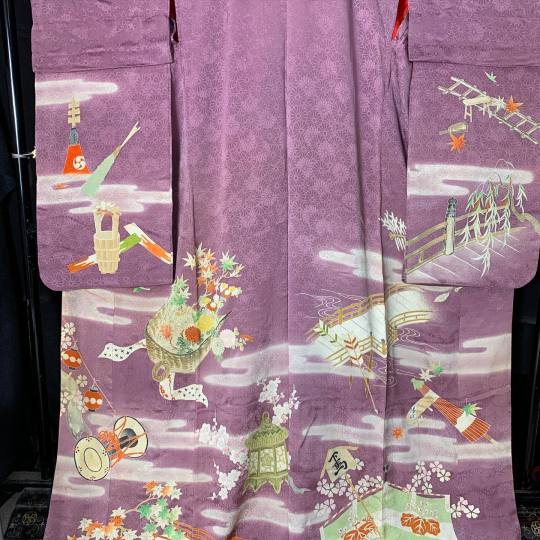
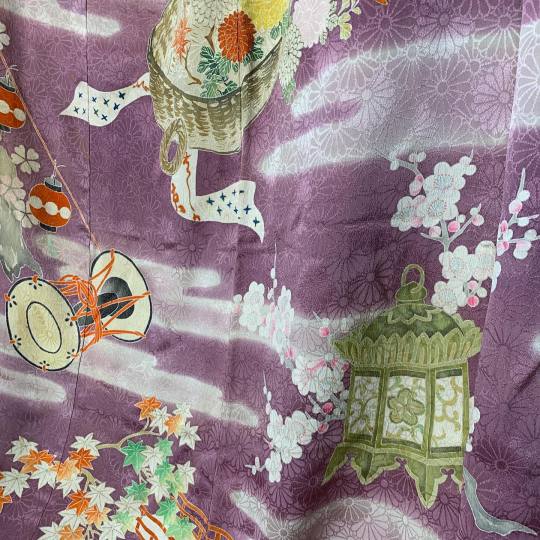
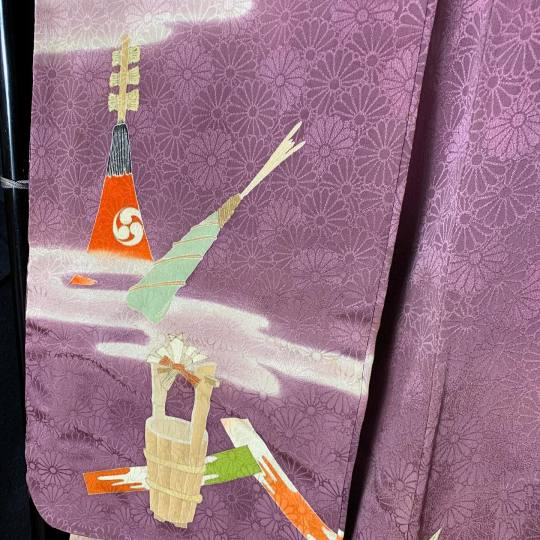
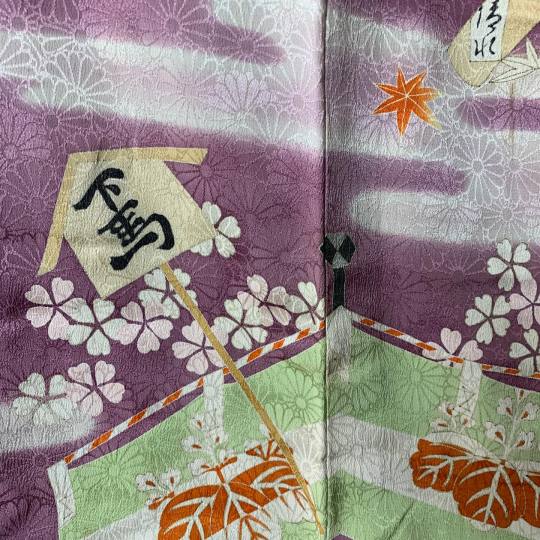
Fantastic hikizuri (trailing kimono, probably a maiko's considering the sode-age sleeves tucks and pattern) depicting all-seasons sceneries & festivals.
#japan#fashion#kimono#hikizuri#susohiki#maiko#hanami#sakura#cherry blossom#manmaku#hanami curtain#yanagi#willow#gion matsuri#yatai#parade float#ume#plum blossom#baikasai#plum blossom festival#momiji#maple leaves#koyo#momijigari#chimaki#tango no sekku#kikku no sekku#double ninth festival#着物
76 notes
·
View notes
Text

Source: ayano.adsh on Instagram
#Koinobori#鯉のぼり#Tango no sekku#端午の節句#childrensday#childrens day#boysday#boys day#こどもの日#Kodomo no Hi#prawns#shrimp#food#foodie#foodies#foodblr#food blog#foodblog#cooking#recipe#recipes
14 notes
·
View notes
Photo

InuYasha | 犬夜叉 | Boys’ Festival (Tango no Sekku)
#InuYasha#犬夜叉#Boys' Festival#Rumiko Takahashi#userinahochi#userdabiluna#userokkottsus#usertorichi#useraslaanjade#tuserelena#mokacheer#usergojoana#userzuura#Koinobori#鯉のぼり#Carp Streamers#Boys Festival#端午の節句#Tango no Sekku#Golden Week#Kodomo no Hi#子供の日#Children's Day#Inu Yasha#Kagome Higurashi#Miroku#Sango#Shippo#Kirara#Spring
77 notes
·
View notes
Text

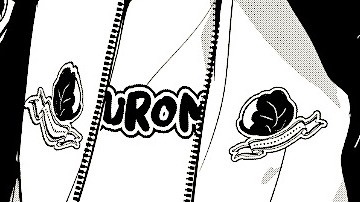
I stand corrected. The leaf is not sakura, but a Daimyo oak leaf. It is said to be sweetish. It is called Kashiwa mochi. The filling is red bean paste (sweet anko) and is wrapped in kashiwa leaf. Traditionally the Japanese eat this mochi during the 5th of May, the so-called Tango no sekku, the Boys’ Day until recently. This was celebrated to ward off evil spirits for samurai boys. In 1948, the Japanese government decreed that it should become the Children’s Day. Meaning, not only boys are celebrated but also the girls.
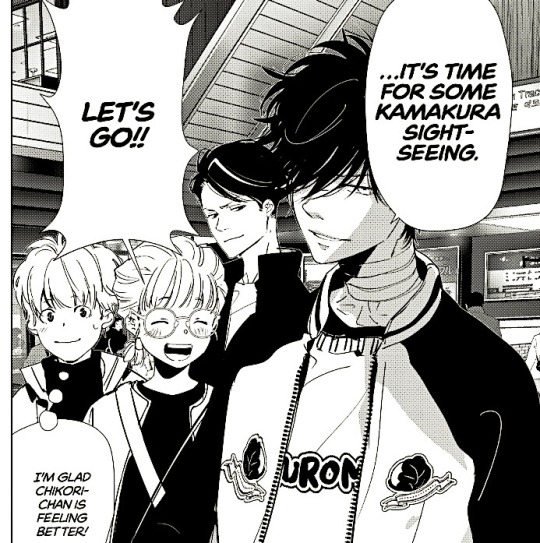
#kamonohashi ron no kindan suiri#ron kamonohashi#totomaru isshiki#akira amano#chapter 120#rkdd spoilers#Tango no sekku#kashiwa mochi
18 notes
·
View notes
Text

Koinobori Knight
In Japan, the fifth day of the fifth month is Tango no Sekku (Boys' Festival) and people decorate their yards with Koinobori (carp streamers).
88 notes
·
View notes
Text

花菖蒲[Hanashōbu] Iris ensata var. ensata
花[Hana] : Flower
菖蒲[Shōbu] : Acorus calamus
菖蒲[Ayame] : Iris sanguinea
菖蒲は紛らわしい。紛らわしい[Magirawashii] means confusing.
Well, there is a proverb 六日の菖蒲[Muika no ayame], which means Ayame on 6th. There is also 十日の菊[Tooka no kiku], which means Kiku(chrysanthemum) on 10th. These are also expressed as 六日の菖蒲十日の菊 or 六菖十菊[Rokushō-jikkiku]. And these mean being late at the appropriate time or date and useless.
In the lunar calendar, Shōbu was used and displayed on 5th of the 5th month, or 端午の節句[Tango no sekku], and Kiku was displayed on September 9th of the 9th month, or 重陽の節句[Chōyō no sekku]. 節句 means seasonal festival.
Ayame and Shōbu have the same kanji name, but they are different species, only similar in leaf shape. And while it is Shōbu that is used for the festival, in that proverb it is mostly read as ayame, sometimes also read as shōbu, though. In addition, flowers of genus Iris look similar. https://commons.wikimedia.org/wiki/File:Sweet-flag_bath,Shobu-yu,Katori-city,Japan.JPG
There are a few Shōbu growing in my garden, but unfortunately there were no flowers. Ayame in the vicinity had already finished flowering. I had intended to write an article about these yesterday but did not make it, so reluctantly posted the picture of Hanashōbu this time. Again, Hanashōbu is a member of the genus Iris.
Today, June 11, is the 6th of the 5th month of the lunar calendar.
31 notes
·
View notes
Photo

Koinobori (鯉のぼり), meaning 'carp streamer' in Japanese, are carp-shaped windsocks traditionally flown in Japan to celebrate Tango no sekku (端午の節句). This traditional calendrical event is now designated as Children's Day (子供の日, Kodomo no hi), a national holiday in Japan.
#Children's Day#Goro Sky Tower#Japan#Koinobori#Kyoto Prefecture#Landscape#Maizuru#Maizuru Bay#Mt. Goro-dake#Observation Deck#Photography#carp streamer#scenic spot#五老スカイタワー#子供の日#皐のぼり#端午の節句#舞鶴市#鯉のぼり
26 notes
·
View notes
Text

Jiro Takidaira "Satsuki (May)"
滝平二郎「五月」 1971年 きりえ/和紙・洋紙、墨・水彩
Tango no Sekku and Children's Day in Japan are celebrated on the same day, 5 May, but their origins are actually different. However, they both share the same wish for the growth of children. 'Dragon Boat' refers to early May. 'Sekku' is a calendar term from ancient China that refers to a day that marks a turning point in the seasons. In other words, 'Tango no Sekku' refers to the seasonal change from spring to summer.
In the past, events were held on Sekku to ward off evil spirits and pray for good health at the change of seasons. In particular, Dragon Boat Festival is also known as 'Shobu no Sekku' because of the custom of soaking in hot water containing irises, which are at their peak at this time of year, to pray for good health and good health. On the other hand, Children's Day was established as a bank holiday in 1948 on the same day as Dragon Boat Festival. It is a day to celebrate the healthy upbringing of children, regardless of gender, but in fact it is not the only day! Although it is not well known, the law (National Holidays Law) defines the day as a day to "respect children's character, promote their happiness and give thanks to their mothers". Yes, it is a day to thank mothers! It is also a day to thank mothers. I would like to tell my children and family about this day. In the Edo period, when a boy was born to a samurai family, there was a custom to celebrate by putting up streamers. This custom spread to the general population, and carp streamers were erected to compete with the samurai families, which was the origin of the carp streamer.
Carp are very vigorous fish and can swim vigorously even in fast-flowing rivers. In China, there is a legend about a carp that became a dragon by climbing up a swift river. It is said that the carp was used as a symbol for overcoming difficulties and achieving success in life, quoting this legend.
23 notes
·
View notes
Text

Asebi sketch to celebrate Tango no Sekku (Children's Day).
Source: Matsuzaki Natsumi-sensei's Twitter.
#yatagarasu#yatagarasu series#abe chisato#matsuzaki natsumi#karasu ni hitoe wa niawanai#a raven for all seasons#asebi
11 notes
·
View notes
Text

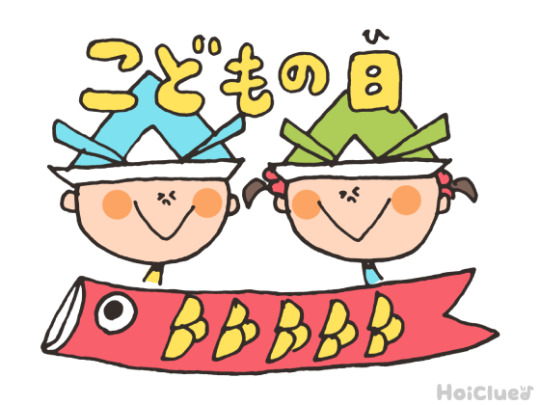
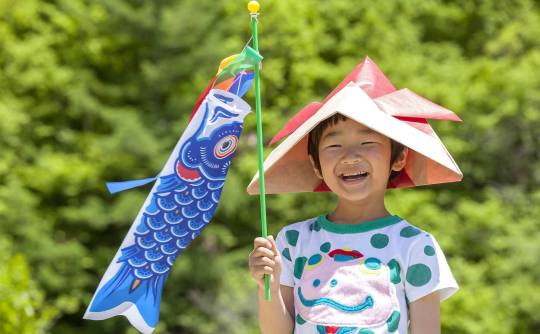

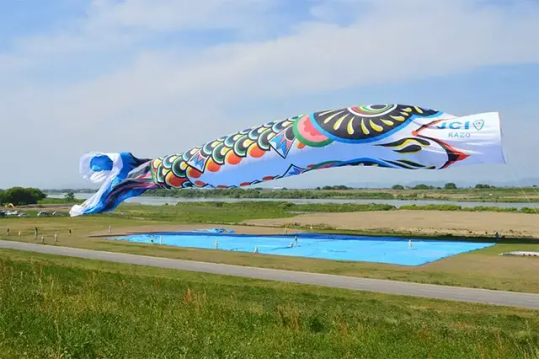
Sean bienvenidos japonsistasarqueológicos, a una nueva entrega cultural en esta ocasión os voy comentar la festividad, del día del niño que se celebra cada 5 de Mayo que se llama Kodomo no Hi y se escribiríaこどもの日 una vez dicho esto pónganse cómodos que empezamos. - ¿Cuándo surgió el día del niño?La festividad, surge en el siglo VIII d.c en lo que respondería al periodo Heian, posiblemente tendría influencia de china al respecto ya que se basó en Tango no Sekku. El Sekku se basa en los puntos de inflexión de las estaciones y se basa en la teoría de los cinco elementos del yin y el yang en China. - La forma tradicional de celebrarlo es ofrecer ofrendas estacionales a los dioses, rezar y comer juntos los productos de segunda mano.En el período Kamakura, en pleno auge de los samurais, se convirtió en un evento importante para orar por el crecimiento y la salud de los niños y la prosperidad de la familia, con adornos como armaduras, cascos, serpentinas de carpa y muñecos festivos. - Ahora a continuación mencionaré algunos dulces de los que se suelen comer el 5 de Mayo: Kashiwa mochi,Chimaki, beko mochi, akumaki , pastel no koi. - Espero que os haya gustado y nos vemos en próximas publicaciones y que pasen un feliz día del niño.
-
今回は、毎年5月5日に行われる「こどもの日」というお祭りについてお話しします。「こどもの日」とは、「こどもの日」と書いて「こどもの日」と読みます。 - こどもの日」の起源は、紀元8世紀の平安時代にさかのぼりますが、「端午の節句」が元になっていることから、中国の影響を受けている可能性があります。節句とは、季節の変わり目を表すもので、中国の陰陽五行説に基づ���ものです。 - 季節のお供え��を神に捧げ、祈り、中古品をみんなで食べるのが伝統的な祝い方です。 武士ブーム真っ只中の鎌倉時代には、甲冑や兜、こいのぼり、祝い人形などを飾り、子供の成長や健康、家族の繁栄を祈る大切な行事となりました。 - 柏餅、ちまき、べこ餅、あくまき、こいのぼりのお菓子です。 - 気に入っていただけたなら幸いです。今後の記事でお会いしましょう。そして、楽しい子供の日をお過ごしください。
-
Welcome to a new cultural delivery in this occasion I am going to comment on the festivity, the day of the child that is celebrated every 5th of May that is called Kodomo no Hi and it would be writtenこどもの日 once said this make yourselves comfortable that we begin. - When did Children's Day come about? The holiday, which dates back to the 8th century AD in what would be the Heian period, was possibly influenced by Chinese in this respect as it was based on Tango no Sekku. Sekku is based on the turning points of the seasons and is based on the five element theory of yin and yang in China. - The traditional way to celebrate it is to offer seasonal offerings to the gods, pray and eat second-hand goods together. In the Kamakura period, at the height of the samurai boom, it became an important event to pray for the growth and health of children and the prosperity of the family, with decorations such as armour, helmets, carp streamers and festive dolls. - Now here are some of the sweets usually eaten on May 5th: Kashiwa mochi, Chimaki, beko mochi, akumaki, no koi cake. - I hope you liked it and see you in future posts and have a happy children's day.
#日本#こどもの日#平安時代#中国#端午の節句#鎌倉時代#佐村河内#柏餅#ちまき#歴史#あくまき#ケーキ#こい#japan#KodomonoHi#Heianperiod#china#Tangonosekku#Kamakuraperiod#samura#Kashiwamochi#Chimaki#history#akumaki#cake#koi#culture#文化
12 notes
·
View notes
Text
Tamagotchi Smart Carp Streamers
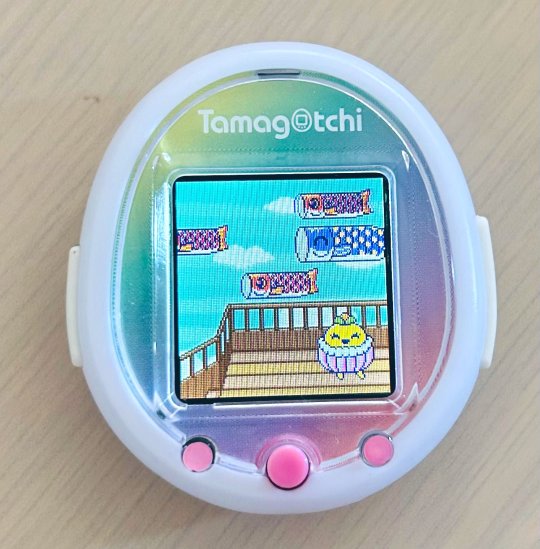
If you head over to the yard on your Tamagotchi Smart you might just seem some carp streamers! Koinobori, or carp streamers in Japanese are carp-shaped windsocks traditionally flown in Japan to celebrate Tango no sekku, a traditional event which is now designated as Children’s Day. Tango no sekku is observed on Friday, May 5th, 2023. These decorations appear every year around this time!
#tamapalace#tamagotchi#tmgc#tamagotchismart#tamagotchi smart#smart#tamatag#virtualpet#bandai#carp#carpstreamer#carp streamer#jp#japan#childrensday#childrens day
32 notes
·
View notes
Text
Interesting article by Xavier from Archéo'Japon, overviewing the history and beliefs surrounding May 5th Kodomo no hi 子供の日 (children's day) / Tango no Sekku 端午の節句 (Japanese take on Duanwu festival) traditions.
Original article is in French but really worth a read through auto-translate if you wish to learn more about the origins of some of the Kodomo no hi rituals :)
#japan#culture#folklore#kodomo no hi#children's day#tango no sekku#Duanwu festival#dragon boat festival#koinobori#carp banner#shoubu#sweet flag#Japanese iris#yomogi#mugwort#Shoki#kusudama#medicine ball#flower ball#inji#rock fight#nobori#banner#hamaya#sacred arrow#fukinagashi#streamer#yaguruma#arrow wheel#kashiwa mochi
58 notes
·
View notes
Photo

Theme: Tango-no Sekku / Children's Day
No matter who or what you are, father hopes you grow up to be big and strong.
#百派繚乱ワンドロワンライバトル#ダヨーン#ダヨーンのおじさん#おそ松さん#へそウォ#osomatsu-san#osomatsu san#mr. osomatsu#dayon#denki mystery#hesokuri wars#mallow doodles
20 notes
·
View notes
Photo

Boys’ Festival ~ Carp Streamers | Yokko
#Japan#Golden Week#Boys' Festival#Koinobori#鯉のぼり#Carp Streamers#Boys Festival#Kodomo no Hi#子供の日#Children's Day#Tango no Sekku#端午の節句#Ayame no Hi#Iris Festival#Spring#Nippon
93 notes
·
View notes
Text

Children's Day was originally called Tango no sekku. The custom of decorating miniature Japanese Samurai Armor and Samurai War Helmet.
Samurai Armor Age: May, 1862
2 notes
·
View notes